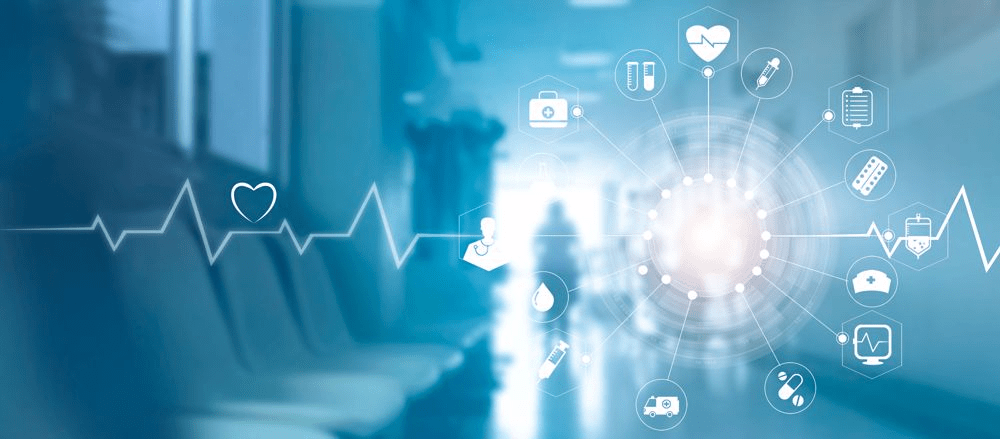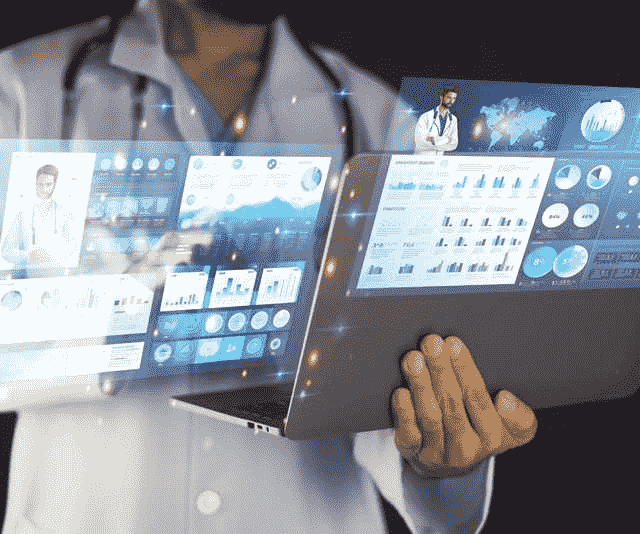In this fast-emerging environment of healthcare, telehealth has brought a drastic change to patient management in ways not previously thought of just some years back.
The development of digital technologies associated with the increasing demand for widely accessible health care placed telehealth at the forefront as one of the most important tools for health professionals and patients alike.
This is an all-inclusive guide to the top ten ways by which telehealth is changing patient management, engendering heretofore unprecedented benefits in the digital age.
10 Ways Telehealth is Improving Patient Management
1. More Access to Health Services
Telehealth broke geographical distances, so patients in remote or unserved areas could receive healthcare services that were out of reach. The increase in access ensures that patients receive consultation, diagnosis, and treatment plans on time, irrespective of the location.
Through video conferencing, mobile applications, and online portals, telehealth makes work free from extensive travel and hence it makes health services convenient and more accessible to all.
Impact on Patient Management:
- Reduced Travel Time: There is a lot of time-saving on resource use, as the patients no longer have to travel distances for consultations.
- Faster Access to Specialists: Patients can consult with medical experts from different parts of the country and seek any form of medical care that they need.
- Improved Health Outcomes: Early and consistent availability of health services results in positive health gains in the body and overall chronic conditions can be controlled.
2. Patient Engagement and Education
Educational resources are often available from telehealth platforms, to allow possible patient enlightenment in respect to conditions and treatment plans.
Telehealth, through the use of videos, articles, and interactive tools, can engage patients in an active responsibility for their health. Better engagement heightens patient satisfaction and leads to better adherence to treatment plans.
Impact on Patient Management:
- Informed Decision-Making: Patients can make better decisions if informed about their care and can discuss the same.
- Better Adherence to Treatment Plans: Patients who are informed or knowledgeable about prescribed treatments adhere better to the same, which will have better outcomes.
- Increased Patient Satisfaction: The patients feel part of their care, and this improves their levels of satisfaction.
3. Better Chronic Disease Management
Chronic diseases, such as diabetes, hypertension, and asthma, require continuous monitoring and management. Telehealth offers continuous monitoring through connected devices that track vital signs, glucose levels, and other essential data on a minute-to-minute basis.
Healthcare providers can remotely access this data and, where necessary, make some changes to the patient plan, which will have a better effect on the optimal management of chronic conditions.
Impact on Patient Management:
- Real-time Monitoring: Continuous monitoring is a possibility, and in case of an indication of some discrepancy, treatment plans can be adjusted on time to prevent complications.
- Fewer Hospital Admissions: Patients can manage themselves at home, without making repeat visits to the hospital.
- Better Quality of Life: Better management of chronic illness sustains the quality of life for the patients.
4. Better Communication between Patient and Provider
Effective communication is the root of proper patient management. Telehealth provides for exceptional communication between the patient and healthcare provider at various touchpoints through video, messaging, and online portals.
This continuing communication will ensure that there is timely advice and support to the patient—to take care of their health.
Impact on Patient Management:
- Access to 24/7 Immediate Point of Contact: The ability of the patient to contact their healthcare provider 24/7 reduces anxiety levels and leads to better outcomes.
- Efficient Follow-Ups: Follow-ups can be done regularly and almost virtually, which saves a lot of time for patients and providers as well.
- Personalized Care: This enables the delivery of more personalized care because of constant communication by the needs of every individual patient.
5. Patient’s Convenience and Flexibility
One of the most significant advantages of telehealth is convenience for the patient. Patients can now book a visit, consult with their doctor, and even get a prescription without having to go out of the house. This is specifically convenient for patients who have mobility problems, those who are caught up in their busy lives, and also for ruralists.
Impact on Patient Management
- Decreased Missed Appointments: The flexibility of telehealth reduces the likelihood of missed appointments.
- Greater Flexibility: Many patients report having better control of their health because they can schedule physician’s appointments at their time of preference.
- Better Patient Experience: One is left believing that the overall patient experience is enhanced since healthcare from a home setting is quite accessible.
6. Improved Cost-Effective Care Delivery
It is cost-effective for both the patient and healthcare providers. Through the reduction of in-person visits, telehealth considerably reduces travel costs, time off from work, and hence the cost of care in general. For healthcare providers, it will assist in reducing overhead costs for keeping physical office spaces and administrative staff.
Impact on Patient Management:
- Affordable Health Care: Quality care is brought within the reach of patients at an affordable cost, eliminating the heavy expenditure incurred for physical visit-based care.
- Better Resource Utilization: With fewer resources used, healthcare providers serve more and hence offer better care more effectively.
- Increased Access to Care: System-driven savings afford to grant healthcare to many individuals in the population, thus benefiting health statistics.
7. Better Data Collection and Analysis
Advanced data collection and analysis tools on the telehealth platform facilitate the gathering of insights valuable to patient health. These platforms could gather data from various sources, for example, wearables, EHRs, and patient self-reports.
Such thorough data collection can enable healthcare providers to make informed decisions on treatment plans tailored to individual patients.
Impact on Patient Management:
- Real-time data supports data-driven decisions taken by providers in order to make the most accurate diagnoses and create treatment plans.
- Detail about the patient: Facilitates a more personalized approach to patients with the help of detailed patient data.
- Proactive managed health: Potential health issues can be detected early, thus allowing for proactive intervention and effective care.
8. Improved Care of Mental Health
Telehealth has provided increased access to mental health services and even started breaking down the barriers with stigmas, unavailability, and geographical barriers. Patients can now partake in therapy, counseling, and psychiatry services directly from their literal homes in order to create a situation of availability without bickering over in-person care.
Impact on Patient Management:
- Accessible Mental Health Care: Mental health patients can easily access mental health services, so this may help in the better management of mental conditions.
- Reduced Stigma: Telehealth services reduce the stigma often faced by patients seeking treatment for mental health conditions because they can experience it in a private and comfortable way.
- Continuous Support: Patients are able to undergo continuous counseling and support, and this is beneficial for the betterment of mental health as well as overall well-being.
9. Emergency Care and Urgent Consultations
This will be important in an emergency and for urgent consultations. Patients are thus able to get quick solutions by connecting to the healthcare provider immediately for advice or triage, which would likely be life-saving in critically acute situations. This thrust of rapid action truly assures that the patients receive the desperately needed care when they need it most.
Impact of Patient Management:
- Immediate Response: Telehealth provides quick access to healthcare providers in emergencies, potentially saving lives.
- Reduced ER Visits: Virtual visits can allow consults with providers, they won’t then decide for the unnecessary ER visits.
- Better Outcomes: The proper time intervention will result in healthier outcomes in case of emergencies.
10. Integration with Health Management Software
The most common integration is now with health management software that includes systems in patient management, EHRs, and health diaries. This not only makes the entire healthcare cycle from scheduling appointments to tracking treatments seamless through integration but also places the providers in the best possible position for an efficient handling of patient care.
Impact on Patient Management:
- Improved Efficiency: The systems of health management software integrated will lead to better efficiency in the organization’s system of health delivery.
- Complete Patient Records: Complete patient records help the providers give comprehensive care easily.
- Better Tracking of Patients: With the combination of health management software and telehealth, the provider can track patients better.
Conclusion
Undoubtedly, patient management is now being revolutionized by telehealth in this digital health era, but not only with the benefit of accessibility, engagement, and positive impact on costs but with changes going all the way in general quality of care.
Telehealth will take up a bigger influence as years pass by, reflecting technological advancement in respect to the face of healthcare.
Make sure you can leverage all these improvements by including a total health management tool, such as the Health Diary, within your telehealth strategy. This innovative software allows patients to gather all aspects of their health data, appointments, and treatment plans in one place.
This can be used by healthcare providers in tracking the progress of a patient and making adjustments as needed so that care is personalized and meets the mark.
Elaborate on further the telehealthcare with a Health Diary that will keep patients in control of their health but at the same time assure top-of-the-line care coming from the doctors. Get on our website to know more and schedule a demo today!
FAQs
Q1. What is telehealth, and how is it different from traditional healthcare practice?
Telehealth delivers health services via digital media like video calls and mobile apps. It ensures care without hospital visits. Telehealth is convenient, brings access to health care, and ensures high-quality health care deliverance or provision.
Q2. Can telehealth be used for chronic disease management?
Telehealth effectively manages chronic diseases. It allows remote monitoring of vital signs and glucose levels remotely. This timely adaptation in treatment plans reduces complications and improves patient outcomes
Q3. How does telehealth impact patient engagement?
They are normally supported with the necessary educational and communicative tools. It would facilitate the patient’s involvement in the process of care.
Through delivery of the information there on their conditions and the possible treatment, patients under telehealth are encouraged to participate more in their care cycle plan. Moreover, better adherence to the treatment plan leads to noticed improvement in their health status.
Q4. Is telehealth cost-effective for patients?
Basically, it saves much more money than a regular visit would, as it cuts into travel expenses, saves the time of not being at work, and often reduces the overall accrued bill. Other savings can be validated with lessened use of emergency rooms and with fewer cases of hospitalization




